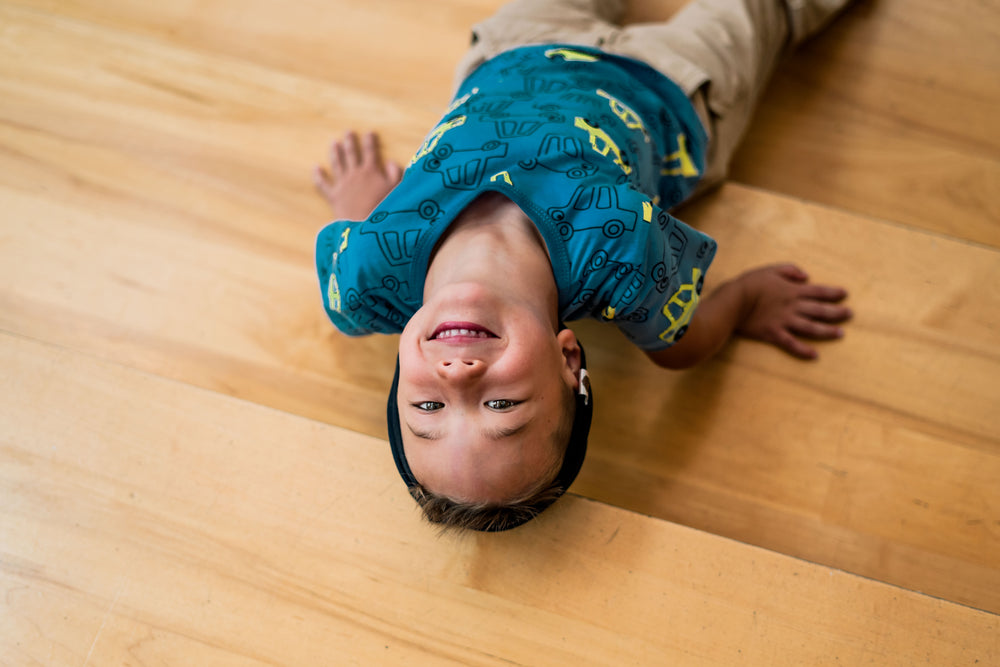Red Light Therapy for Autism: Does it Work?
If you’re a parent exploring natural ways to help your child with autism thrive, you may have come across something called red light therapy—also known as photobiomodulation or low-level light therapy (LLLT). But what is it, and can it really help with emotional regulation, sleep, and sensory processing?
In this article, we’ll walk you through:
-
What red light therapy is
-
How it works in the brain and body
-
Why it may help children on the autism spectrum
-
What current research shows
-
How we use it at Sensory Therapy Place in a sensory-safe, parent-guided way
What Is Red Light Therapy?
Red light therapy uses low levels of red or near-infrared light to stimulate cellular function. Unlike UV rays from the sun, red light does not burn or damage skin—it actually promotes healing, circulation, and nervous system regulation at a cellular level.
It works by penetrating the skin and activating the mitochondria (the "powerhouse" of cells), improving how cells use energy.
Why Is This Relevant for Kids with Autism?
Children with autism often experience:
-
Emotional dysregulation
-
Sleep disturbances
-
Inflammation in the brain and gut
-
Sensory hypersensitivities
-
High cortisol levels (stress hormone)
Red light therapy has been shown to:
-
Lower inflammation
-
Balance melatonin and circadian rhythms (better sleep!)
-
Improve oxygen and blood flow to the brain
-
Promote calm and relaxation by shifting the nervous system from fight-or-flight to rest-and-digest
In essence, it helps the body’s internal systems work with more ease—which can be especially beneficial for neurodivergent children whose systems are often working overtime.
What Does the Research Say?
While research is still emerging, early studies and clinical evidence are promising:
-
A 2021 study published in Photobiomodulation, Photomedicine, and Laser Surgery showed improved sleep and social behaviors in children with autism after near-infrared light treatments.
-
Another small trial reported decreased irritability and self-stimulatory behaviors after consistent red light sessions.
-
Animal studies also suggest improvements in neuroplasticity, gut-brain connection, and cognitive performance after red light exposure.
🔍 Note: Red light therapy is not a cure for autism—but it may be a supportive tool in a well-rounded care plan.
How We Use Red Light Therapy at Sensory Therapy Place
We offer red light therapy as a non-invasive, sensory-sensitive modality to support regulation, sleep, and recovery.
Our process is:
-
Parent-led and trauma-informed
-
Combined with rhythmic movement or sensory integration activities
-
Optional for families and always explained in advance
-
Calibrated for short, gentle sessions (5–10 minutes max)
-
Supervised by trained therapists
We also educate parents on safe at-home use of red light therapy panels for calming bedtime routines or post-meltdown recovery.
Frequently Asked Questions
Q: Is red light therapy safe for kids?
Yes, when used correctly with pediatric-safe devices and under guidance, red light therapy is safe and pain-free. We avoid blue or flickering light and always test sensitivity first.
Q: Will my child tolerate the light?
Our therapy space uses soft lighting, noise reduction, and movement-based tools to help children ease into the experience. For some kids, we use a vibrating cushion, weighted blanket, or calming music alongside the light.
Q: Do you recommend home red light devices?
Yes—but not all devices are equal. We recommend low EMF, low flicker panels with adjustable settings. We can help you choose one that fits your child’s needs and family budget.
Final Thoughts: Should You Try It?
Red light therapy is not a standalone solution, but when paired with occupational therapy, sensory strategies, and caregiver education—it can be a powerful ally for calming the nervous system and helping your child feel safe in their body.
We believe in evidence-informed, child-centered care—and red light therapy is just one of many tools we personalize for your child’s success.
Ready to Explore Red Light Therapy for Your Child?
📍 In-Person Sessions Available in Brewer and Bangor, ME
💻 Virtual Parent Consults & Coaching Available Nationwide
👉 Book a red light consult
👉 Contact our therapy team
👉 Shop calming sensory tools



Support Your Child’s Development Through Movement
Our Sensory Tools Catalog 2025 are designed to promote natural movement that helps integrate primitive reflexes, the key for building coordination, focus, and emotional regulation. By encouraging active play in a supportive, loving environment, these tools help your child reach developmental milestones with confidence.
No reviews available.
